Click the Saturn Vue Hybrid for a high res gallery
Back in mid-2006, GM rolled out its first mainstream production hybrid, the Saturn Vue Green Line, fairly late in its product life cycle. That one featured the first iteration of the mild GM Hybrid system. It was in production for less than a year before the first-gen Vue went away in favor of an all-new global design that was developed in a cooperative arrangement between GM engineers in North America, South Korea and Europe. The same body style is sold in Europe and other parts of the world as the Opel Antara. A second version with different styling and a lower level of content is sold in most of the world as the Chevy Captiva.
The second-generation Vue debuted in North America in late spring of 2007 and the new Green Line hybrid model came along about six months later. The old Vue was the last Saturn to follow the original model of a metal structure with plastic body panels. That setup has now been abandoned in favor of a metal body and it pays big dividends in fit and finish but we'll come back to that. The Vue falls into the burgeoning compact crossover class, and is currently one of only two hybrids in the segment (the other is the Ford Escape). Find out how the Vue compares after the jump.
Photos Copyright ©2008 Sam Abuelsamid / Weblogs, Inc.
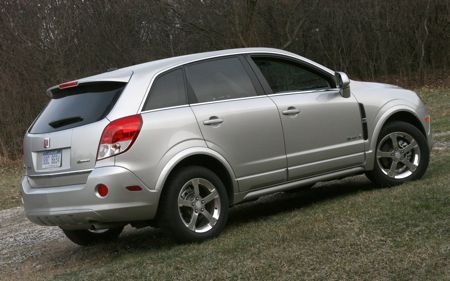
The new Vue is a far more attractive vehicle than its predecessor and the steel body panels give a much greater feeling of quality. The biggest flaw of Saturn's plastic body panels was the huge panel gaps. Prior to the 1990 launch of the original S-series models, GM had to increase the gaps when hot weather testing revealed that the doors wouldn't open when the panels got hot and expanded. That unfortunately remained a trait common to all Saturns until the Vue and Ion were retired in early 2007.
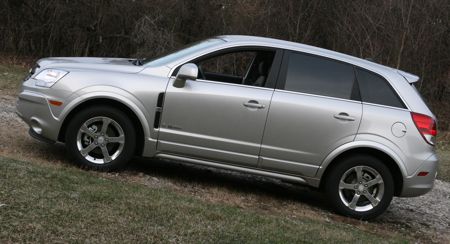
Saturn's junior crossover has a nicely integrated look with chunky proportions that will appeal to SUV intenders that want something smaller. The combination of the downward sloping roof and rising belt-line contributes to a somewhat sportier appearance especially when compared to the boxier, more upright Ford Escape. The only real fly in the ointment for the Vue's styling is the seemingly mandatory fender vents. Enough already! The only vehicles that should have vents in the fenders are those that actually need to get hot air out of the engine compartment.
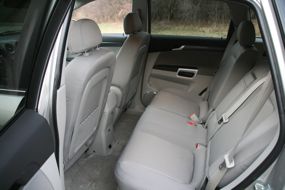
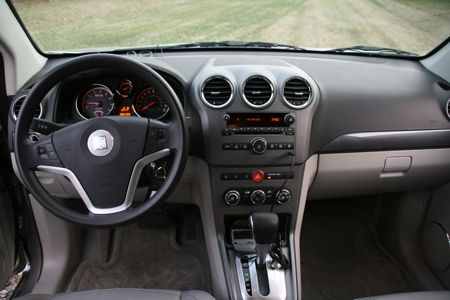
Controls are reasonably well laid out and the center stack is uncluttered. The radio is typical mainstream GM fare, with XM built-in and a nice big round knob dead center underneath for controlling the noise volume. As with virtually all current GM audio systems, an auxiliary input jack is included so that can utilize the digital audio player of your choice if nothing on the radio strikes your fancy. The styling of the dash is far more car-like and attractive than the Escape and appears to be of higher quality materials.
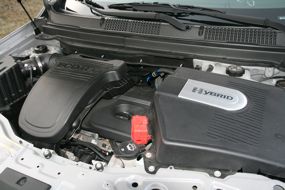
During acceleration, the motor can basically act as an electrically-driven turbocharger providing up to 7hp extra when the battery has sufficient juice. Aside from that, it shuts down the engine when the vehicle comes to a stop and automatically restarts it when the brake pedal is released. Here is one place where the Vue shines. Unlike every other front wheel drive hybrid I've tried, this one had absolutely no shudder on restart. To varying degrees, the Toyotas, Nissan, Ford and the Saturn Aura I've sampled all had some powertrain shake when the engine was started and stopped. Not so the Vue, which was completely seamless.
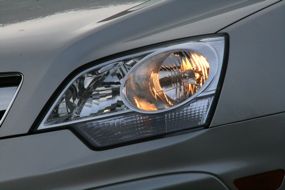
Of course, such a small motor and battery means the system can't drive anywhere on electricity alone. Most of the work is done by the 2.4L EcoTec four cylinder and the four speed automatic transmission. GM really needs to replace this unit with a new six speed as soon as possible. In typical GM fashion, the four speed is a smooth shifter, but for maximizing fuel efficiency its really short a gear or two. The Vue does have an economy gauge tucked into the lower part of the tachometer that indicates if the battery is being charged or depleted and observing the state of the needle can help to get the most out of this crossover.
Aside from the powertrain, the chassis of the Vue is very capable for this type of vehicle. The ride is firmer than usual thanks to the 40psi in the low rolling resistance tires. The handling is responsive and the steering is nicely weighted and, as usual, devoid of feedback. It's not a particularly engaging ride but it also won't scare you if you have to make an evasive maneuver.
OK, let's cut to the chase. Saturn brags about the Vue hybrid having the highest highway mileage of any SUV. This is true, as the Vue hybrid comes in at 32mpg. But, because this is a mild hybrid, it only manages 25mpg on the urban cycle. Those numbers beat the 19/26mpg ratings of a standard four cylinder front drive Vue handily. Thanks to its strong hybrid setup, the Escape is rated at 34/30 city/highway. In real world driving primarily around town and with one highway trip, the Vue averaged 24.5mpg which is not horrible for a vehicle of this type but certainly doesn't approach the EPA numbers. The Escape we tested last year, on the other hand, achieved 30mpg during its time in the ABG garage.
The Vue is about 150lbs heavier and does offer more usable space inside than the Escape. It's also a lot more stylish, especially if you're not looking for the miniature truck look. Those interested significantly better mileage might want to wait until later this year when the two-mode hybrid version arrives. That one should be close to the 30mpg mark and will offer significantly better performance especially for towing. It will also command a significantly higher price than the $25,370 tab for the mild Hybrid Vue. As CUVs go, this one is worth a look, with reasonable interior space and sharp looks. Just don't expect a Prius (or Escape) beater at the pumps.
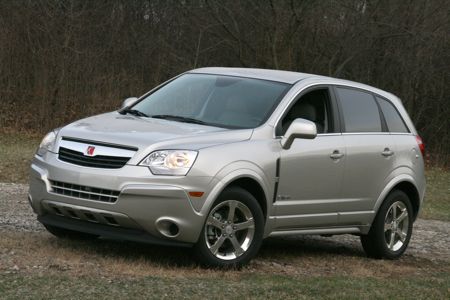
Photos Copyright ©2008 Sam Abuelsamid / Weblogs, Inc.
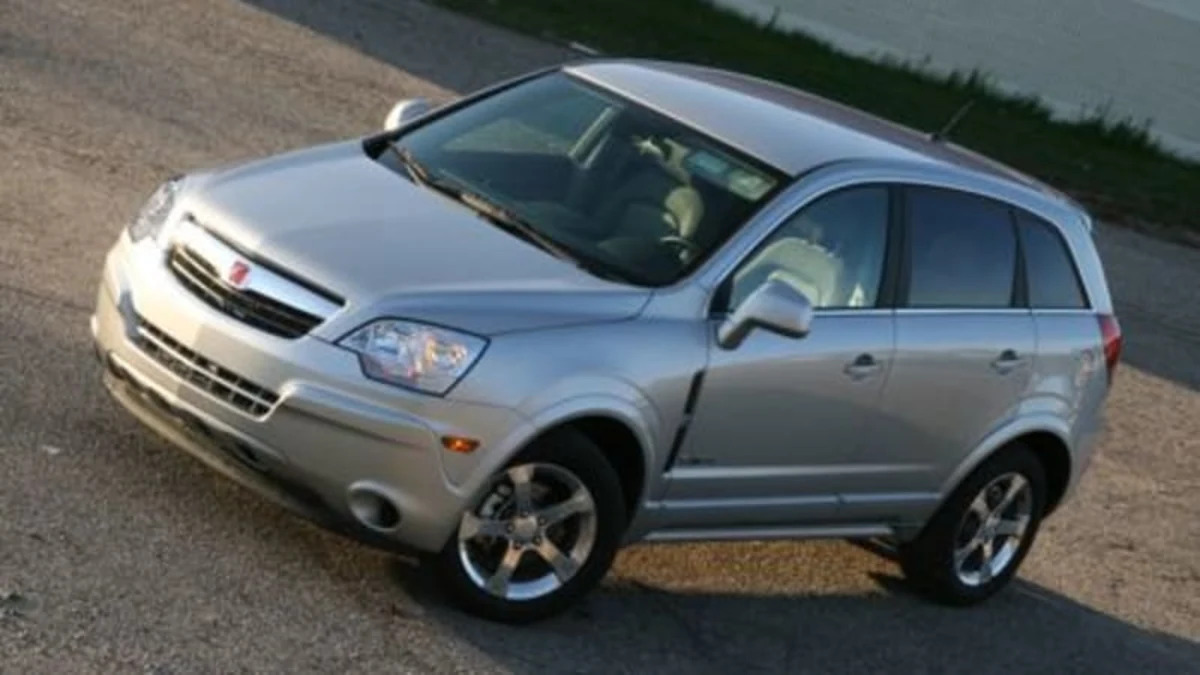


Sign in to post
Please sign in to leave a comment.
Continue